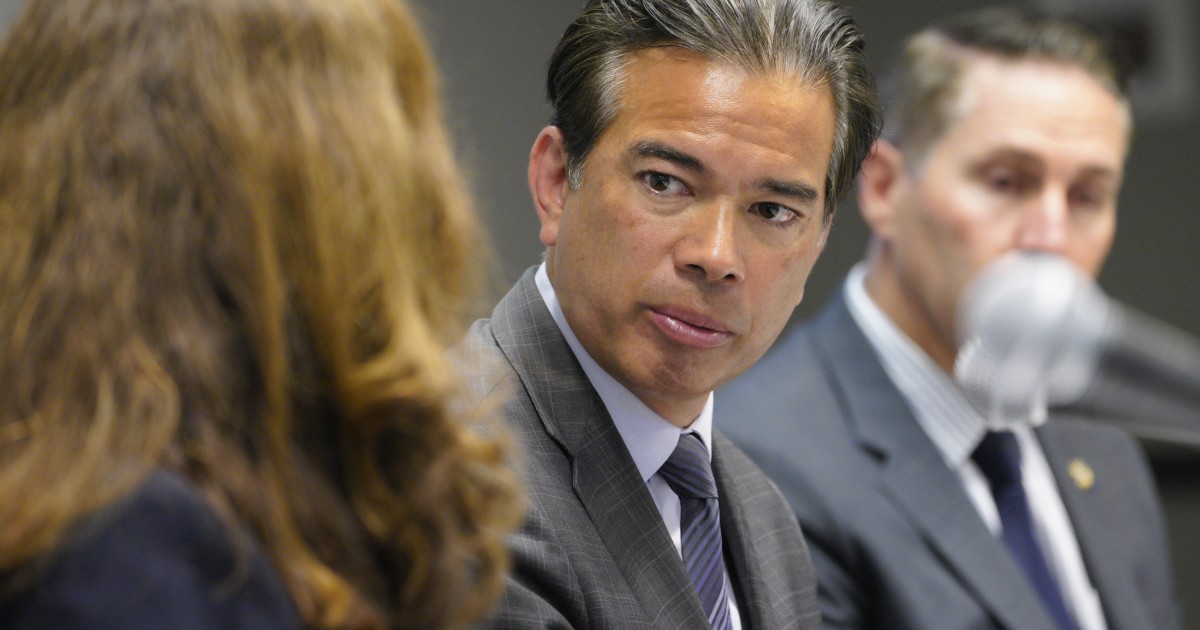State Attorney General Rob Bonta met with San Diego’s city attorney and police chief Tuesday for a short roundtable discussion about the effectiveness of gun violence restraining orders, which allow police to seize guns from people who pose a credible threat of violence.
“If we can do something that is common sense and lawful and constitutional to keep people safe, we should. We ought to,” Attorney General Rob Bonta said during the half-hour discussion at San Diego police headquarters, in front of reporters and television cameras.
Last year, 1,285 gun violence restraining orders were obtained in all of California. Of that, 483 — 37 percent — were issued in San Diego County.
Bonta called the region the “epicenter” for obtaining such restraining orders, and said he’d like to see the model spread through out the state.
“This is an example of something that has worked, that can work in more places if we implement it in more places,” Bonta said.
The state attorney general’s visit comes the day after Gov. Gavin Newsom signed a state budget that includes $1 million earmarked for the San Diego City Attorney’s Office to teach agencies across the state how to use the orders in hopes of preventing violence.
San Diego City Attorney Mara Elliott’s office has already trained about 400 agencies. The new funding will cover trainings for the next three years.
Police Chief David Nisleit said he was onboard from the start, and said the orders are “a great tool to remove firearms from those who are going to harm themselves or somebody else.”
He also noted that a San Diego police officer is now embedded fulltime with Elliot’s office to work with prosecutors on the orders. “That’s how much I believe in it,” he said.
The law that allows for gun violence restraining orders was prompted by a 2014 mass shooting in Isla Vista, near UC Santa Barbara, when a 22-year-old man killed six and injured 14 in a spree that included three fatal stabbings and several random shootings before he killed himself.
The law went into effect in January 2016 and allows law enforcement officers — or family members, coworkers, school employees and the like — can ask a judge to remove access to firearms and ammunition for people who pose significant danger to themselves or others. The restraining orders require gun owners to surrender or sell their weapons. They cannot possess guns or ammunition for a year.
“This is not a permanent removal,” Elliott said. “It is a crisis intervention.”
Elliott has embraced the use of gun violence restraining orders since taking office in late 2016, and her office obtained its first of the orders in January 2018. In the three and a half years since, the office been involved in more than 550 cases, and more than 1,000 guns have been seized from San Diegans deemed a danger.
Handguns account for more than half of the weapons taken as a result of the orders in San Diego. Long rifles or shotguns made up another 40 percent. Nearly 5 percent — 48 of them — were assault rifles.
The reasons behind seeking such orders vary but can include threats of violence at schools or businesses. During the first few months of the pandemic, the number of gun violence restraining orders obtained for San Diegans threatening suicide tripled.
According to the City Attorney’s Office, uses of the orders included removing guns from a man who’d recorded himself pretending to shoot passersby from his hotel room overlooking a busy downtown street.
Guns were also seized from a 60-year-old man whose coworkers reported that he’d spoken of how he could have done a better job than others of carrying out mass shootings, and a 21-year-old man who’d posted a photo of himself with a gun with the message RIP to his former high school, according to a column Elliott wrote last month for sdnews.com.

